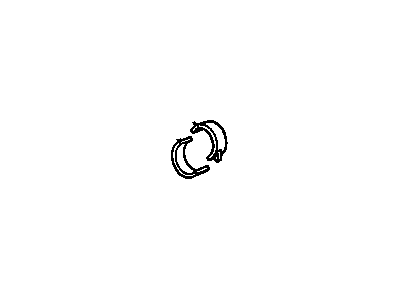
My Garage
My Account
Cart
Genuine Oldsmobile Omega Rod Bearing
Engine Connecting Rod Bearing- Select Vehicle by Model
- Select Vehicle by VIN
Select Vehicle by Model
orMake
Model
Year
Select Vehicle by VIN
For the most accurate results, select vehicle by your VIN (Vehicle Identification Number).
1 Rod Bearing found
Oldsmobile Omega Bearing Kit,Connect Rod
Part Number: 12480255$0.38 MSRP: $0.59You Save: $0.21 (36%)Ships in 1-2 Business Days
Oldsmobile Omega Rod Bearing
Rod Bearing in Oldsmobile Omega car model is essential as it helps the crankshaft as well as the connecting rods to rotate with least amount of friction. The last bearing type is plain bearing, these may be bi-metal or tri-metal in construction. Bi-metal Rod Bearings are equipped with an aluminum alloy layer with additional silicone coating used for increasing its hardness and seizure coefficients. On the other hand, self-lubricating or tri-metal Rod Bearings have layer of copper alloy and on top of that there is layer of lead-tin-copper overlay that offers strength and fatigue resistance. Years down the line, Oldsmobile Omega cars have used numerous Rod Bearing with the performance models using tri-metal Rod Bearings because of their reliability, and lubrication characteristics. These performance Rod Bearings may also have specific coating and may be offset to provide better oil clearance and retention for better engine reliability under high output engines. To maximize the usefulness of the Oldsmobile omega, it is always important to ensure that parts such as the Rod Bearing are well installed and well maintained.
Each OEM Oldsmobile Omega Rod Bearing we offer is competitively priced and comes with the assurance of the manufacturer's warranty for the part. Furthermore, we guarantee the speedy delivery of your orders right to your doorstep. Our hassle-free return policy is also in place for your peace of mind.
Oldsmobile Omega Rod Bearing Parts Questions & Experts Answers
- Q: What precautions should be taken when using Plastigage to check Rod Bearing clearances on Oldsmobile Omega?A:When working with Plastigage, three precautions are essential, first, before carrying out the test, it is advisable for all the surface of the Crankshaft and bearing surfaces that are in contact with the Plastigage to be free from any traces of oil and grease as the compound is soluble in oil; secondly, ensure that once the Plastigage has been fitted in the crankshaft or any other engine part that it does not get into contact with the crankshaft or the engine any other way Whenever an engine is undergoing overhaul, it is necessary to always check the bearing clearances and this applies to the used and the new bearings. The working of the procedure for the main and connecting rod bearings is analogous. First of all, fit the main bearings and caps into the engine block, make sure crankshaft and bearing surfaces thoroughly washed with oil, dirt, any other unwanted substance. Put a strip of Plastigage at the main bearing journal of the crankshaft and then fit each main bearing cap and fasten its bolts to the required tightness with the arrow on each cap pointing frontwards. Read and retain the bearing number stamped on the bearing, then , after tightening, dismantle each bearing cap and measure the width of the compressed Plastigage strip with reference to the scale exhibited on Plastigage envelope to understand the state of clearances for each bearing. As with most rotational equipment, if the Plastigage is much more flattened at the two ends than in the middle or, conversely, if the flattening is most pronounced in the middle, this is indicative of journal taper. It can be detected when all the Plastigage is removed, when the crankshaft has turned 90 degrees; then, check again the clearances with the Plastigage; by comparing the measurements made above with these latter, the eccentricity can be assessed. For connecting rod bearing clearances, it is necessary to install each piston/rod assembly and use such measure as Plastigage mentioned above. Also, it is possible to measure connecting rod side clearance at this time, if necessary. Any that are out of tolerance should be removed and replaced with bearings of the correct size; upper and lower bearings must always be replaced in pairs.









